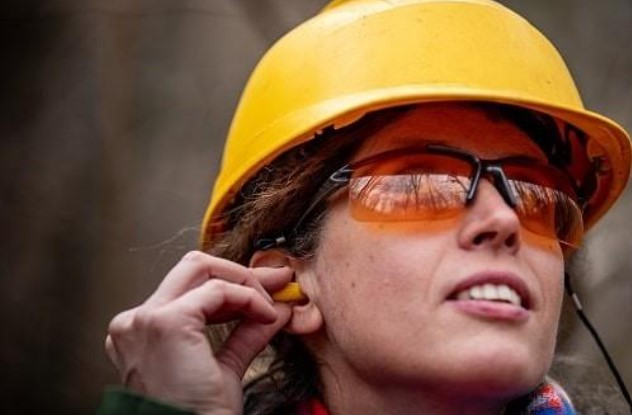Introduction
When people think about workplace safety hazards, images of dangerous machines, falling objects, or chemical spills usually come to mind. But one of the most harmful threats is something you can’t see, taste, or smell: noise.
While noise is often considered a mere nuisance, excessive workplace noise is a serious health hazard that affects far more than just hearing. From mental fatigue to cardiovascular stress, excessive noise can gradually deteriorate employees’ overall health and productivity. The effects are subtle and may not be immediately obvious, but they compound over time, leading to long-term health issues.
How Noise Affects the Human Body
Although hearing loss is the most well-known consequence of noise exposure, the effects of excessive noise in the workplace extend beyond just the auditory system. Noise can impact a variety of bodily functions, including:
1. Increase Stress Levels
Loud, persistent noise activates the body’s “fight or flight” response, triggering the release of stress hormones such as cortisol and adrenaline.
Over time, this continuous activation leads to chronic stress, which can negatively affect mental health, contributing to irritability, decreased focus, and burnout.
2. Raise Blood Pressure and Heart Rate
Studies have shown that workers in high-noise environments are at higher risk of hypertension and heart-related illnesses.
Noise exposure has been linked to increased blood pressure, elevated heart rate, and even heart disease in workers who are consistently exposed to loud environments. Over time, the cumulative effect of this stress can contribute to cardiovascular problems.
3. Reduce Concentration and Productivity
Noise creates distractions that make it difficult for workers to focus on tasks, leading to more errors and slower work.
In high-noise environments, employees may miss details, fail to communicate effectively, or struggle with multi-tasking, all of which can hinder productivity. For example, on a factory floor, workers may fail to hear verbal instructions or safety warnings, increasing the risk of mistakes or accidents.
4. Cause Sleep Disturbances
Workers who are exposed to loud noise during the day often experience disrupted sleep patterns at night, leading to insomnia or poor-quality sleep.
Sleep deprivation caused by noise exposure impacts recovery, energy levels, and overall alertness, leading to decreased productivity and increased risk of accidents during work hours. This creates a vicious cycle of fatigue and decreased performance.
Early Warning Signs of Noise-Related Health Issues
Noise-induced health problems often develop slowly, which makes it important to recognize early warning signs. These signs include:
Difficulty hearing conversations in noisy settings, especially if the person must shout to be heard.
Ringing or buzzing in the ears (tinnitus), which can be a sign of temporary or permanent hearing damage.
Fatigue or irritability after spending time in noisy environments, as continuous noise increases stress levels.
Headaches or dizziness after long exposure to high noise levels, which can be caused by mental fatigue or the strain of trying to process information in a noisy environment.
Ignoring these early signs can lead to permanent damage and long-term health complications, which can significantly impact both work performance and overall well-being.
High-Risk Occupations
Certain industries and occupations are particularly susceptible to high levels of noise exposure. Some of the most affected occupations include:
1. Airport Ground Crew
Jet engines can exceed 140 dB, creating an extremely high noise environment for ground crew workers. Extended exposure to this level of noise can cause irreversible hearing damage and increase the risk of miscommunication or accidents.
2. Construction Workers
Jackhammers, drills, and other construction machinery produce noise levels around 120 dB, well above safe limits for prolonged exposure. Construction workers face increased risks of hearing loss, communication breakdowns, and safety hazards due to high noise levels.
3. Manufacturing Employees
Presses, conveyors, and stamping machines in manufacturing settings typically operate at 90–100 dB, posing significant risks to hearing health. Workers in these environments may also experience fatigue and reduced concentration due to the constant noise.
4. Musicians & DJs
Constant exposure to amplified music can damage hearing, even at moderate levels. Musicians and DJs are particularly vulnerable to tinnitus and permanent hearing loss from prolonged noise exposure.
5. Miners
Drilling equipment in mines often exceeds safe noise levels, and miners are at risk of permanent hearing damage from continuous noise exposure.
Prevention and Control Measures
To mitigate the health risks of noise exposure, employers can implement a range of control measures that focus on reducing noise at the source, limiting exposure, and providing protective equipment. The most effective approach follows the Hierarchy of Controls:
1. Eliminate the Source
Replace outdated, noisy machines with quieter models.
Where possible, redesign processes to minimize noise production. For example, installing quieter machinery can drastically reduce the overall noise levels in a factory or workshop environment.
2. Engineering Controls
Install sound-absorbing materials like acoustic panels, curtains, and enclosures to reduce noise levels.
Use vibration dampeners on machines to minimize noise at the source.
Create physical barriers between noisy and quiet areas of the workplace to keep workers away from high-noise zones.
3. Administrative Controls
Rotate workers between noisy and quieter areas to reduce exposure time.
Schedule noisy tasks during off-hours or less populated times to minimize overall exposure.
Enforce “quiet zones” in break areas where workers can take restorative breaks away from noise.
4. Personal Protective Equipment (PPE)
Provide earmuffs for high-frequency noise environments (e.g., construction, aviation) and earplugs for moderate noise levels (e.g., manufacturing).
Combination protection (earplugs and earmuffs) is necessary for extreme noise levels in industries like mining or aviation.
The Role of Training and Awareness
While equipment and controls are important, safety equipment alone is not enough. Workers must understand the risks of occupational noise exposure and know how to protect themselves. Training should include:
Recognizing hazardous noise levels: Educating employees on how to identify and evaluate noise hazards in their work environments.
Proper use and storage of hearing protection: Ensuring workers know how to use PPE correctly and safely store earplugs and earmuffs when not in use.
Importance of annual hearing tests: Encouraging regular hearing checks to detect early signs of hearing damage.
Reporting noise-related health symptoms early: Encouraging workers to report any hearing issues or concerns before they become irreversible.
Conclusion
Workplace noise hazards are more than just an annoyance—they are a serious occupational health risk with both short-term and long-term consequences. Employers who actively manage noise exposure are not just protecting workers’ hearing; they are safeguarding their physical, mental, and emotional health. By implementing OSHA-compliant noise control programs, providing quality PPE, and building a culture of awareness, organizations can create safer, healthier, and more productive workplaces.
A quieter workplace is not just a safer environment—it is a healthier, more productive, and financially successful one. Noise control is an investment in employee wellbeing, company reputation, and business performance.


